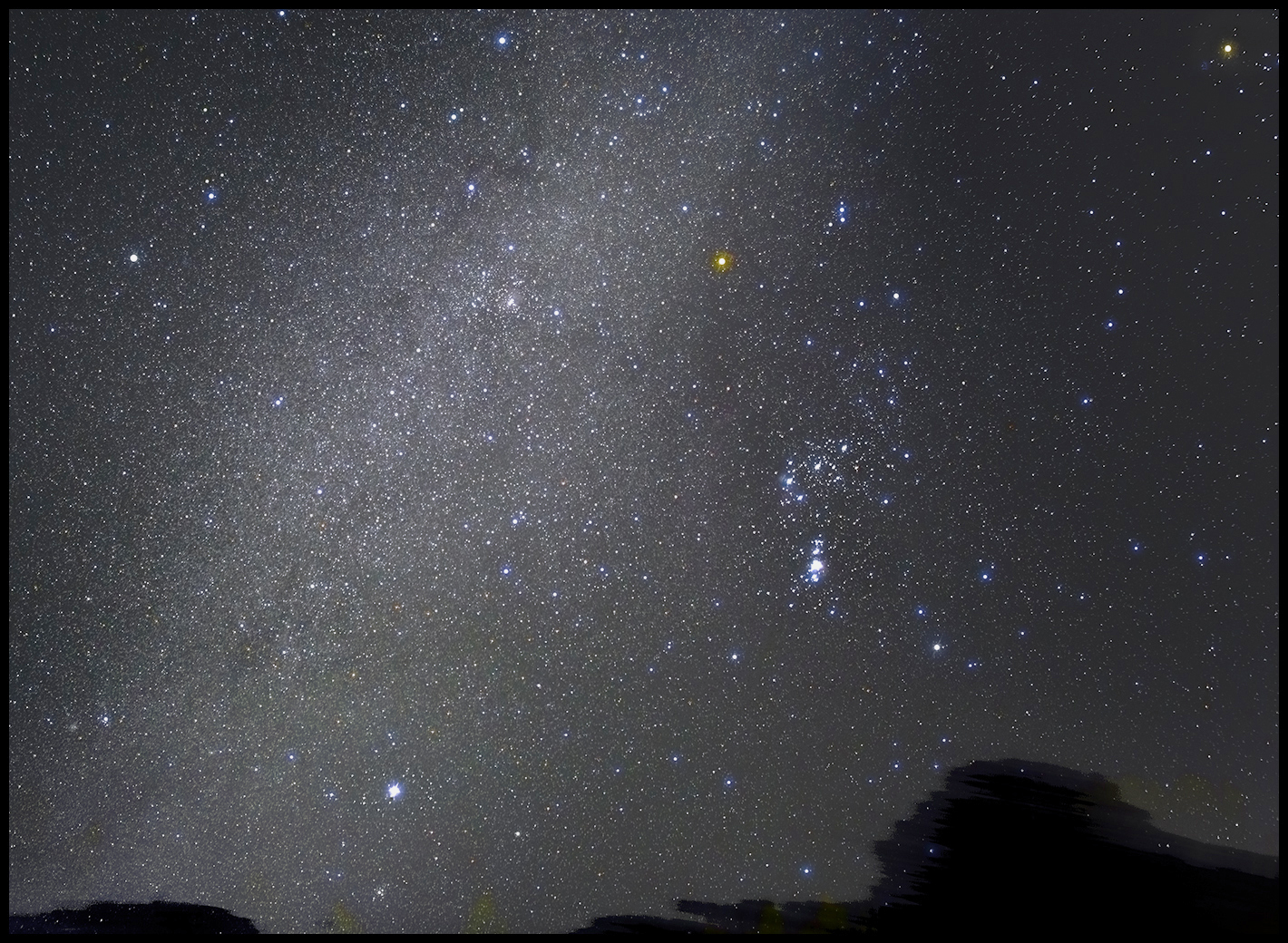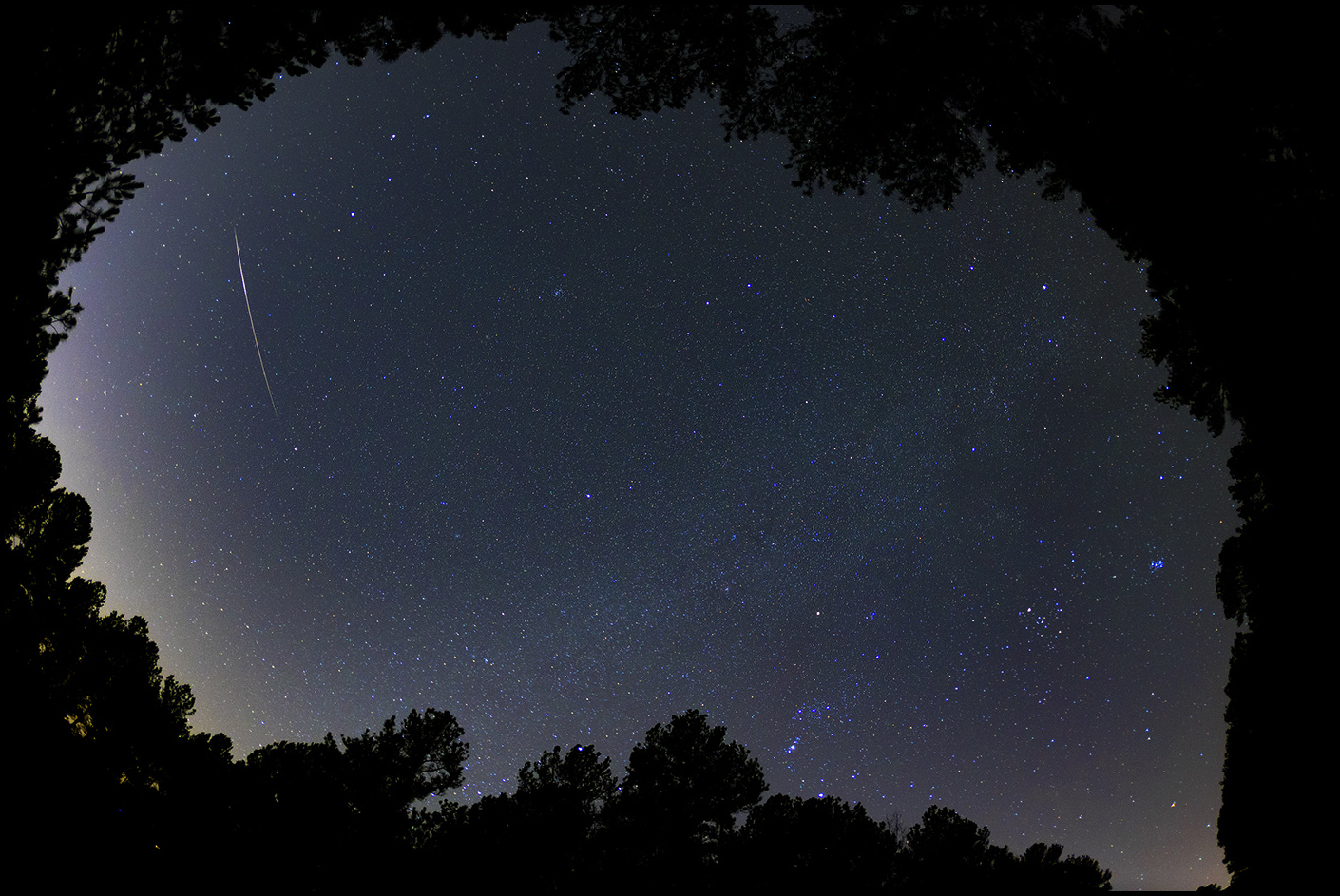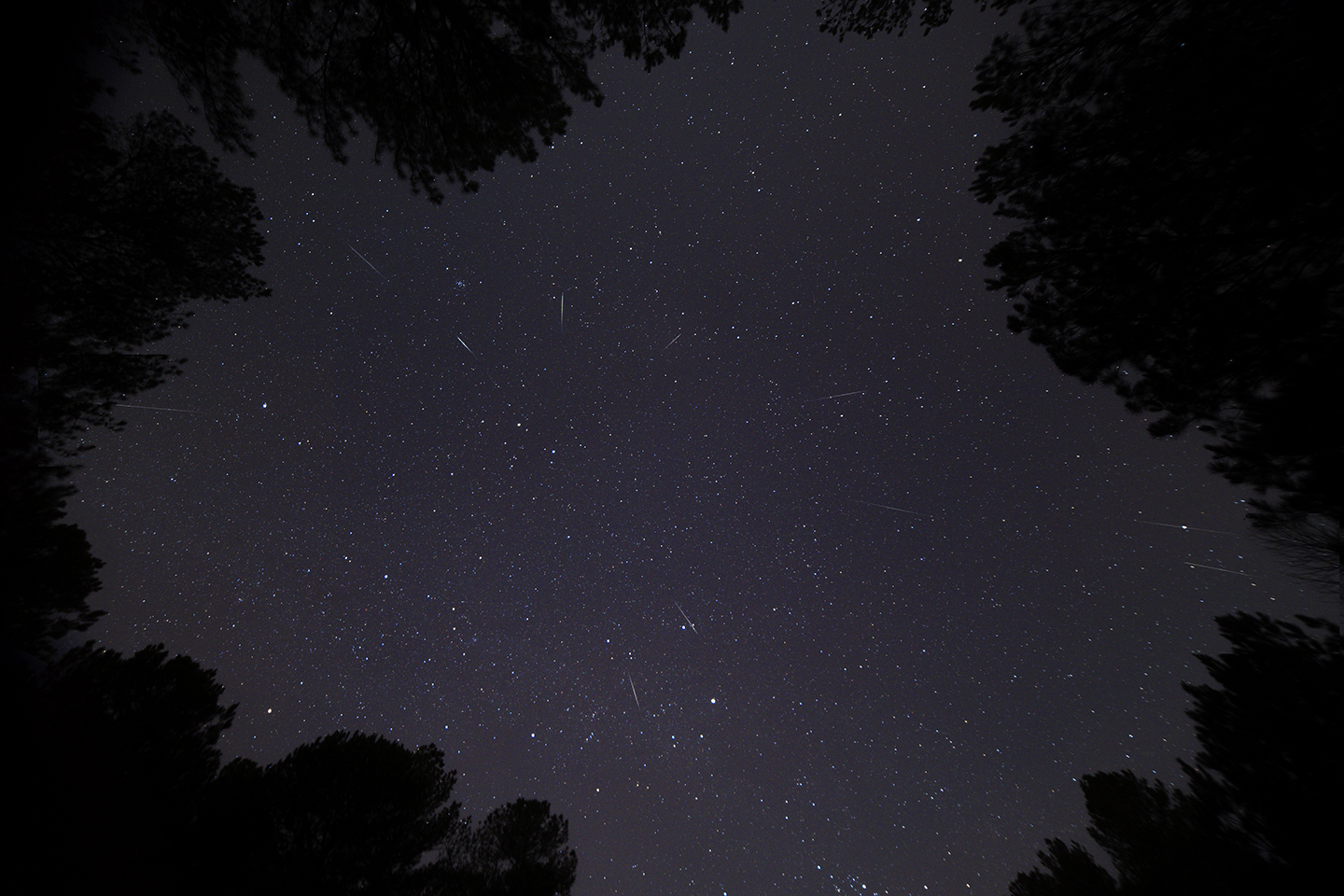|
The Geminids
12/14/2021. Last night and tonight, I went out under transparent skies between moonset and sunrise to try to catch a few pieces of 3200 Phaethon falling toward the cul de sac. Yesterday morning, I had the 24mm Rokinon on the 6D on the iOptron SkyTracker (F1.4, 20s, and ISO 800) and the 15mm Canon Fisheye on the R6 on a fixed tripod (F2.8, 30s, and ISO 1600). The latter caught more, which surprises me. In some cases, I can hunt down meteors on the 6D after noting them on the R6, and in at least one, the flash must have come between frames (there is a 2s latency between consecutive 20s exposures while the 6D's buffer writes; why? there is no such delay when shooting sequences of shorter exposures, and no, I do not have long exposure noise reduction on). Whatever the reason, it's something to add to the calculus of optimizing nightwork. At 20 seconds, that delay costs 10% in imaging efficiency. It costs less with longer exposure times.
The SVBony dew heater powered by a jumpstarter kept the fisheye completely dew free; the 24mm fogged and frosted over after a couple of hours. The 6D battery was depleted after about 300 frames; the R6 was still going strong when I went up to retrieve it.
One bright Geminid left a train north of Leo. I didn't actually see it so can't guess how bright it was. The train persisted through the next several photos; it lasted seven or eight minutes or maybe longer (depending on how aggressively you process subsequent images). Here's a video from the R6/Fisheye (the 6D/24 was looking farther west).
I began the night with the 6D/24mm Rokinon tracking a broad swath of sky including Orion and southern Gemini. I caught only one or two faint meteors, but I was left with a pile of tracked, 20s exposures of that part of the winter sky. Might as well do something with them, right?

79x20s, F1.4, ISO 800
24mm F1.4 Rokinon, Canon 6D
Tracking via iOptron SkyTracker
(Severely cropped to avoid optical sins.)
Late in the morning, one bright meteor tracked across the eastern sky. It wasn't a Geminid, but I'm not going to hold that against it:

30s, F2.8, ISO 3200
15mm Canon Fisheye on R6
untracked
On Tuesday morning, I kept things simpler: just the R6, the Rokinon 14mm F2.8, the dew heater, the iOptron tracker, and about 280 thirty-second exposures aimed toward the radiant. I composited eleven Geminids for this understated rendition. Click it to make it big.

Click the pic to make it big
or else you probably won't see a damn thing
14mm F2.8 Rokinon on R6, 30s @ISO 3200
iOptron SkyTracker
I had my doubts that the dew heater would keep the huge front element of the Rokinon clear, surrounded as it is by a plastic barrel and a plastic petal dewshield. But on a night when the temperature dropped to 25 degrees F, two degrees below the dew point, the lens stayed perfectly clear. When I walked Gemma around the trail just after sunrise, the grasses in the former beaver pond were so frosted that they looked as if they were covered by an inch-deep snowfall.
I have learned that it is hard to get out of bed at 3AM in sub-freezing weather to uncertain prospects, so these last two nights I have napped, risen to set up the gear, and then either come back to rest and nap (as yesterday) or revelled in the nighttime show (this morning).
This morning as I walked up the driveway toward Capella, camera on tripod over my shoulder, a brilliant fireball dropped sizzling due west through the stars of Auriga, a long cascade through the boughs of the pine trees, brilliant green where filtered and scattered by the needles, bursting in yellow flashes as it passed through small gaps. It must have been -5 or -6, one of the most gorgeous meteors I have ever seen. If I had been ten minutes earlier...
I set up anyway and soon began to see a steady rain of lesser Geminids, one every three minutes or so, despite my paying more attention to the camera than to the sky, despite the trees rimming the clearing, despite moderate light pollution. The official ZHR must have been impressive.
I walked back down after starting the camera, intending to go inside for a while, but was seduced by the night. I made a cup of tea and stood in the back yard, listening to a train a few miles to the south in Connelly Springs, to dogs up the cove or perhaps across the lake, to owls calling in the tall woods above the wetland. Only rarely did the tops of the trees move or the sound of a breeze come to me in the dark. Once, briefly, the smell of a coal fire found me through the woods.
When I returned to the camera, I thought there might be a slight haze on the lens. The battery pack reported that only a few percent of its power had been consumed by the heater. I cranked it up some and went for a walk through the neighborhood. I saw several Geminids to the west, hidden from the camera by terrain and taller woods in that direction. I was sure there had to be as many overhead and to the east, south, and north.
I called it a night about 5:45. Rates seemed to have diminished, and the cold and lack of sleep for two nights running eroded my enthusiasm. In maybe half an hour dawn would have ended the show in any case.
:: top ::
My deep-sky photos are made with a variety of sensors and optics. Deepest images come now from a ZWO ASI1600MM Cooled Pro CMOS camera, an ASIair (model 1) and sometimes one of several laptops. A good many images come from an unmodded Canon 6D but a lot more will be coming from an R6. Video and video extracts begin in a Canon EOS M, usually running in crop mode via Magic Lantern firmware (but the 6D and especially the R6 will probably see more use). Telescopes include an AT10RC, an Orion 10" F4 Newtonian, and a pair of apochromats: a TMB92SS and a AT65EDQ. A very early Astro-Physics 5" F6 gets some use, too. So do lots of camera lenses on both the ASI1600 and on the Canons. A solar Frankenscope made using a 90mm F10 Orion achromat and the etalon, relay optics, and focuser from a Lunt 60 feeding a small ZWO camera will see more action as the Sun comes back to life (Autostakkart!3 is my current fav for image stacking). Mounts include an iOpton SkyTracker (original model), a bargain LXD-55, a Losmandy G11 (492 Digital Drive), and an Astro-Physics Mach1. PixInsight does most of the heavy lifting; Photoshop polishes. Some of the toys are more or less permanently based in New Mexico. I desperately hope to get back soon.
|